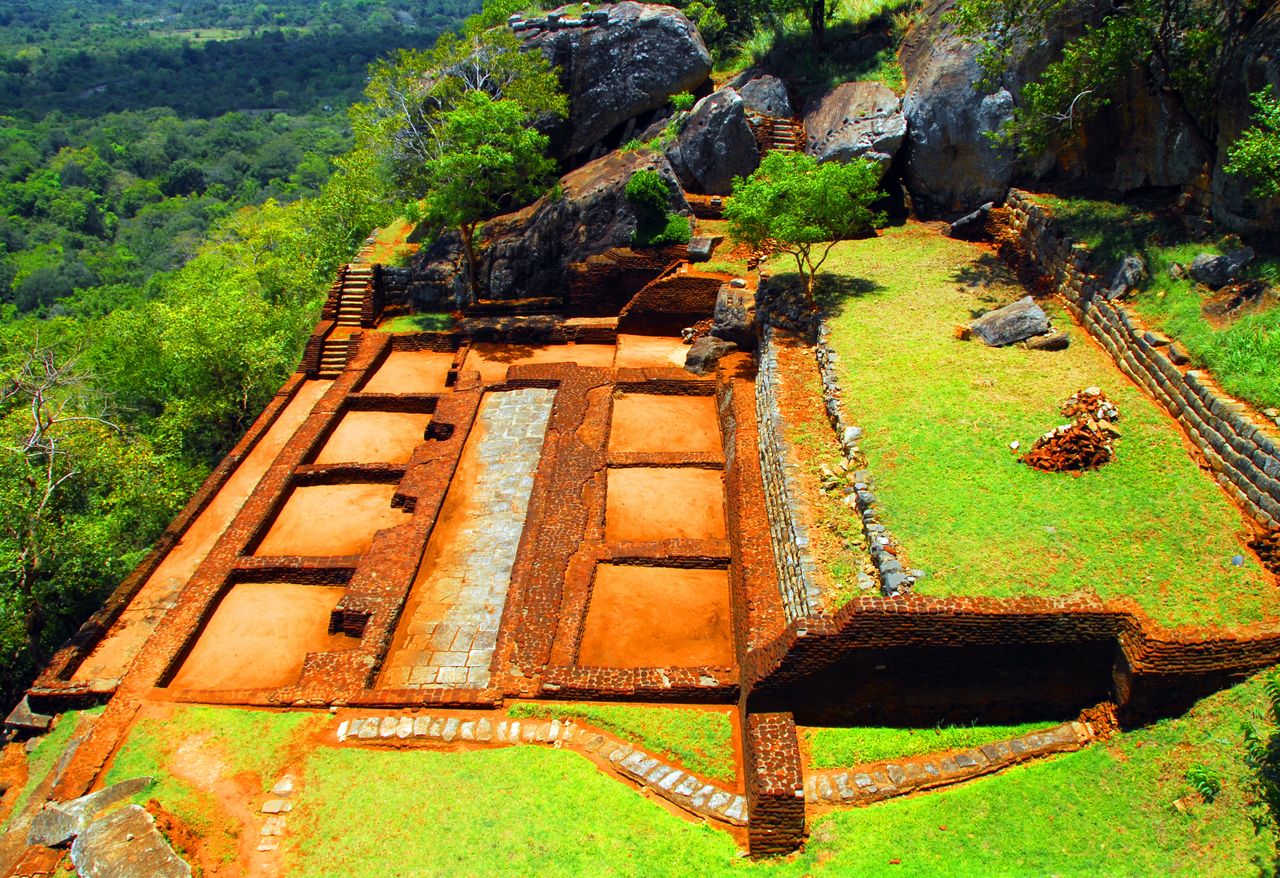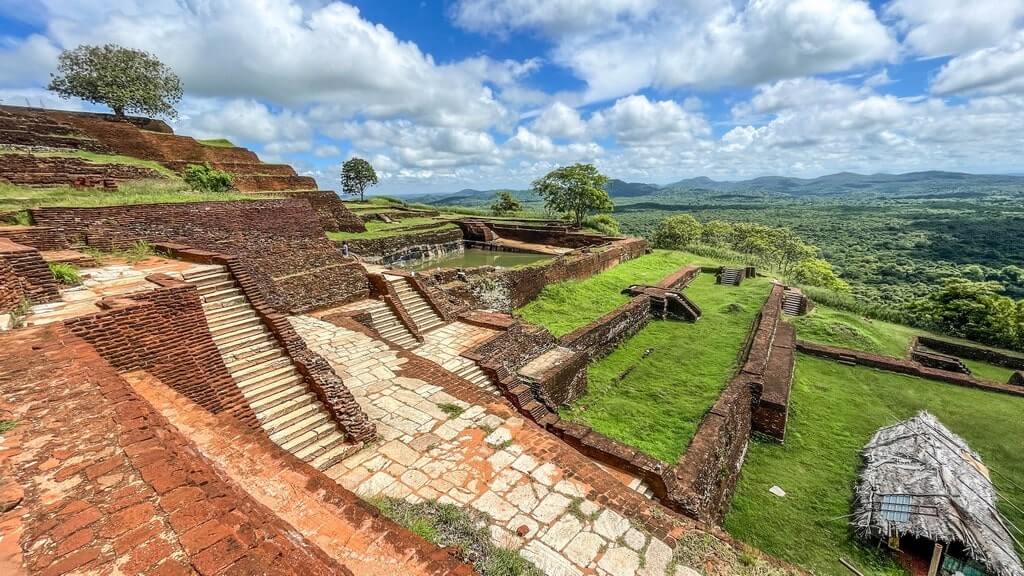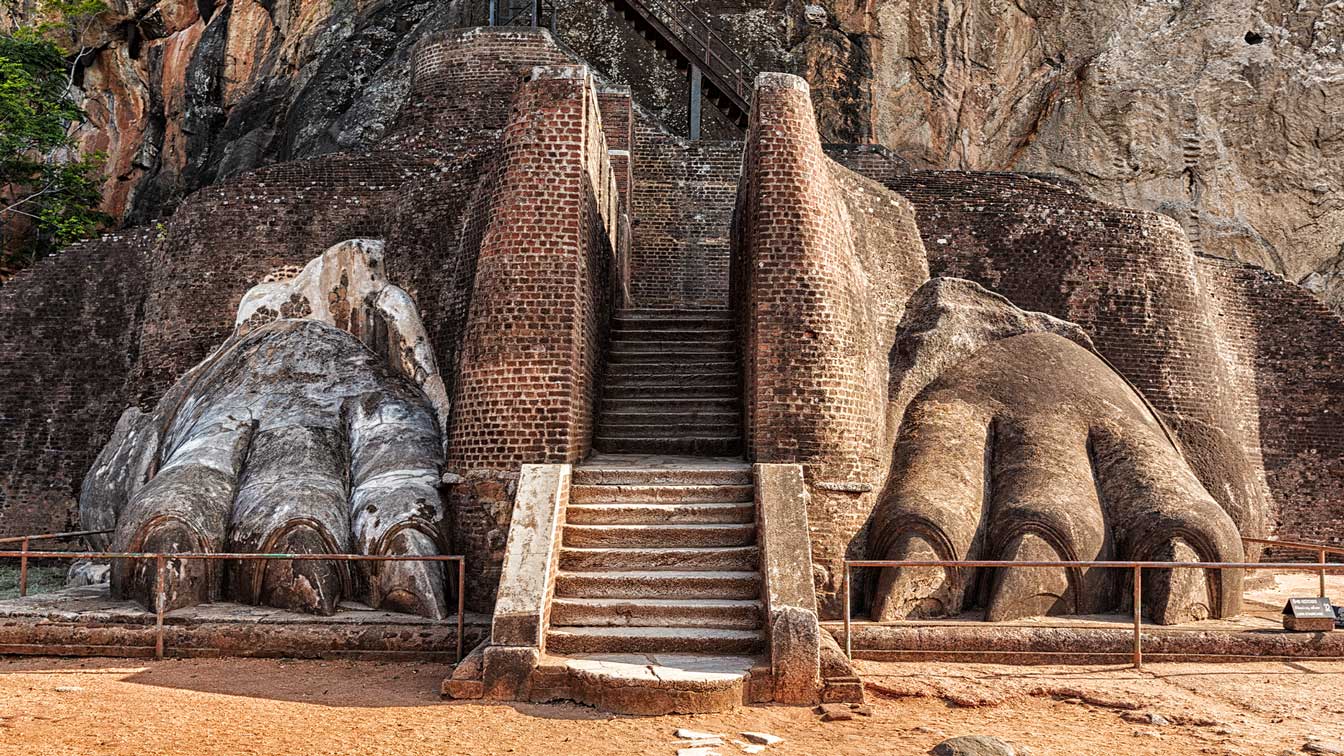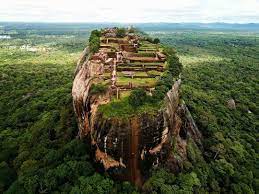Sigiriya: The Eighth Wonder of the World

Sigiriya, the magnificent Lion Rock Fortress, stands as one of the most extraordinary architectural and artistic achievements in human history. Rising dramatically 200 meters above the surrounding plains of central Sri Lanka, this ancient rock citadel represents an unparalleled fusion of natural grandeur, royal ambition, and artistic genius. Designated as a UNESCO World Heritage Site in 1982, Sigiriya is celebrated as a masterpiece of urban planning, hydraulic engineering, and landscape architecture that continues to captivate visitors from around the globe.
Often referred to as the “Eighth Wonder of the World,” Sigiriya is simultaneously a fortress, palace, garden, gallery, and monastery, embodying the pinnacle of 5th-century Sinhalese civilization’s technical and artistic capabilities.
The Legend of King Kashyapa
Sigiriya’s most dramatic chapter unfolded under King Kashyapa I (477-495 CE), whose reign was marked by patricide, paranoia, and unprecedented architectural ambition. After seizing the throne by murdering his father, King Dhatusena, Kashyapa feared retribution from his exiled half-brother Moggallana. He abandoned Anuradhapura and chose the imposing Sigiriya rock as the site for an impregnable fortress-palace.
In just eighteen years, Kashyapa transformed this monolithic rock into one of the most sophisticated royal complexes of the ancient world. The fortress was conceived as both a military stronghold and a representation of Mount Meru, the cosmic mountain at the center of Buddhist and Hindu cosmology, with Kashyapa positioning himself as a god-king.
When Moggallana returned with an army in 495 CE, Kashyapa descended to meet his brother in battle. Facing defeat, Kashyapa took his own life. Following his death, Sigiriya was donated to the Buddhist monastic order and functioned as a monastery until the 14th century, after which it was gradually abandoned and reclaimed by jungle.
The Rock: A Natural Monument
The Sigiriya rock is a geological marvel—a massive column of hardened magma from an extinct volcano. The sheer-sided plateau rises vertically from the surrounding landscape, its reddish-orange walls glowing brilliantly at sunrise and sunset. The summit plateau covers approximately 1.6 hectares and offers commanding views extending for miles across the forests and plains.
The Water Gardens: Hydraulic Sophistication
Sigiriya’s western precinct contains some of Asia’s oldest surviving landscaped gardens, demonstrating extraordinary hydraulic engineering and urban planning. These gardens are organized into three distinct forms:
The Water Gardens: Arranged in precise symmetrical patterns, featuring interconnected pools, channels, and fountains. The sophisticated underground hydraulic system, still partially functional after fifteen centuries, supplies water to numerous fountains that operate even today during the rainy season.
The Boulder Gardens: A transitional zone where massive natural boulders incorporate brick structures, meditation platforms, and cave dwellings, creating a natural gallery leading toward the rock.
The Terraced Gardens: Built on natural terraces and artificial platforms, connected by stairways and including meditation areas, audience halls, and residential structures.
The Ascent: A Journey Through Time
The climb to Sigiriya’s summit follows the ancient processional route, each stage revealing architectural and artistic wonders. The outer defense consists of a moat and massive ramparts encircling approximately 70 hectares.
The Frescoes: Celestial Maidens
Midway up the rock lies one of Sigiriya’s greatest treasures—the world-famous frescoes of the “Sigiriya Maidens.” These extraordinary paintings depict voluptuous female figures adorned with jewelry, their bodies rendered with remarkable naturalism and sensuality.
Originally, hundreds of these celestial figures adorned the western face. Today, only twenty-two frescoes survive, protected within a shallow rock shelter. Interpretations range from apsaras (celestial nymphs) to queens and consorts, or representations of goddesses. These paintings demonstrate the sophistication of 5th-century Sinhalese art, with bold lines, rich colors, and naturalistic treatment comparable to the great artistic traditions of India.
The Mirror Wall: Ancient Graffiti
Below the frescoes runs the famous Mirror Wall—originally finished with highly polished lime plaster that gleamed like a mirror. Between the 6th and 14th centuries, visitors scratched poems and reflections onto the surface. Over 1,800 inscriptions have been documented, offering a unique window into medieval literary culture and aesthetic sensibilities.
The Lion’s Gate
The original entrance to the summit palace was through a monumental gateway constructed as a gigantic lion. Visitors would pass between the lion’s enormous paws—still visible today—and ascend through staircases that emerged from the beast’s mouth. Though only the massive paws remain (each approximately 3 meters long), they suggest the gateway’s original overwhelming grandeur. This gave Sigiriya its name: Sinhagiri—Lion Rock.
The Summit Palace: Royal Splendor
The rock’s summit once supported an elaborate palace complex. Today, foundations, water tanks, and structural remnants reveal the sophisticated layout:
The royal residence occupied the northern end, featuring multiple rooms and audience halls. A carved stone throne platform served as the king’s seat—literally the highest seat of power in the kingdom. Large cisterns carved into the rock stored rainwater, while carefully planned gardens, pools, and pavilions created a paradise in the sky.
The views from the summit are breathtaking—360-degree panoramas extending across forests, ancient reservoirs, and distant mountains. At sunrise and sunset, the vistas become truly magical.
Symbolism and Cosmic Design
Sigiriya’s design incorporates profound cosmological meanings. The entire complex represents a three-dimensional mandala, with the rock symbolizing Mount Meru. The symmetrical layout, precise cardinal alignments, and integration of natural features reflect sophisticated understanding of sacred geometry and urban planning.
Archaeological Significance
Sigiriya represents a unique synthesis of military engineering, palace architecture, religious symbolism, and artistic expression created within an extraordinarily brief timeframe. The site provides invaluable evidence of 5th-century technology, including advanced hydraulic engineering, sophisticated urban planning, high-level masonry techniques, and artistic traditions bridging classical and medieval periods.
Conservation Efforts
The Central Cultural Fund faces significant challenges in preserving Sigiriya’s vulnerable heritage. The surviving frescoes require constant monitoring and climate-controlled viewing galleries. Structural stabilization, environmental management, and visitor impact control demand ongoing attention. Advanced documentation techniques, including 3D scanning and photogrammetry, support conservation planning.
Visitor Experience
Climbing Sigiriya remains one of Sri Lanka’s most rewarding experiences, combining physical adventure with historical discovery. The ascent requires 1.5 to 2 hours, involving approximately 1,200 steps and steep staircases. The physical challenge is rewarded at every stage—the water gardens’ serenity, the frescoes’ beauty, the Mirror Wall’s poetry, the Lion Gate’s drama, and the summit’s spectacular views.
Early morning or late afternoon visits offer cooler temperatures and enhanced lighting. Sunrise from the summit provides an unforgettable experience as mists dissipate and the landscape awakens.
Cultural Legacy
Sigiriya serves as a powerful symbol of Sri Lankan cultural achievement and national identity. Born from royal paranoia and political turmoil, this extraordinary complex transcended its origins to become a timeless masterpiece. Fifteen centuries after King Kashyapa’s dramatic reign, Sigiriya continues to inspire wonder and affirm the extraordinary capabilities of human creativity and engineering.








*Photo credits go to the respective owners
